Hydrographical Office, Washington, Feb. 28th, 1846
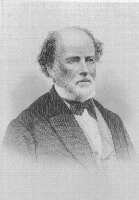
Sir: I wish you to take charge of the equatorial for the present, and to prepare for a regular series of observations of double stars, clusters, nebulae, and lunar occultations. The occultations will extend no farther than to stars of the sixth magnitude.
The observations of double (and multiple) stars will embrace distance, angle of position, color, magnitude, and appearance...
Let your observations embrace every double star of which the larger is of the 10th magnitude or under.
Respectfully, &c., &c.,
The 26 inch has been used to measure double stars with very few interruptions since 1875.
The results prove that the 26 inch refractor is an excellent instrument for double star measurement.
F.F. Gray
Capt., USNO
June, 1956
The U.S. Naval Observatory has, for well over a hundred years, been involved in
various programs related to the observation of double stars. The above quote by
the first Superintendent of the Naval Observatory, Lieutenant Matthew Fontaine
Maury, gives, as one of the first orders of observatory, the order was given to
Sears C. Walker, and further gives the mechanics by which, double star observing
should be done. Three observing techniques have been used : visual micrometry,
photography, and speckle interferometry.
For a complete description of the U.S. Naval Observatory please check out Steve Dick's history, Sky and Ocean Joined. Further information from the Public Affairs office is available here.
While it is included in the micometry section, the earliest work done by
James Gilliss was not done by this method. The double star observations of
Gilliss were made during the U.S. Naval Astronomical Expedition to Santiago,
Chile in 1850-52. The catalog, prepared under the direction of William
Harkness (1868), was ``formed by plotting on a large scale the differences of
right ascension, and of declination, of the components of double stars
observed with the transit circle, and then measuring from the drawings the
distances and angles of position. No direct observations of distances or
angles of position were ever made on the stars themselves.'' The
observations were made by Captain (at the time Lieutenant) James M. Gilliss,
Lieutenant (then Passed Midshipmen) A. MacRae, and Mr. S. Ledyard Phelps,
master United States Navy. ``Captain Gilliss planned the reductions, and they
were mostly executed under his supervision. He seldom had more than one or
two assistants employed on the work at the same time; and as it extended over
a number of years, it has proved somewhat difficult to ascertain the names of
all of them. However, the following list is believed to be complete, viz:
Messrs. John R. Gilliss, F.G. Hesse, H. Diebitch, Wm. Harkness, F.A.P. Barnard,
E.B. Merriman, and John Weissner. The distances and angles of position in the
catalogue of double stars were computed graphically by Mr. Merriman.''
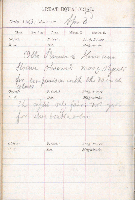
The earliest work in micrometry was done at the Foggy Bottom site in the midst of the Civil War with a 9.6 inch refractor by Asaph Hall, James Ferguson and Simon Newcomb. Later work in the late 19th and early 20th century was done by E. Frisby, Asaph Hall, Jr. (prior to his joining the staff of the U.S. Naval Observatory), E.S. Holden, H.S. Pritchett, J.C. Watson, C.H.F. Peters, Ibrahim Esmatt (a visitor from Cairo), and Lt. W.H. Allen. In the early years, the 26 inch was visited by the leading double star astronomers of the late 19th and early 20th century. The discoveries of S.W. Burnham made with the 26 inch telescope of the U.S. Naval Observatory are described below. In 1883 the USNO was host to the Director of the Imperial Observatory at Pulkowa, Otto von Struve and his son Hermann. The primary purpose of this visit was instrument evaluation preparatory to testing the thirty inch objective made by Alvan Clark & Sons for the Pulkowa Observatory. It is easy to imagine these two double star experts desiring to put the 26" through its paces by observing some close doubles. However, as the 26" log indicates at right, conditions were not favorable. Another well known double star observer, William Hussey, observed with Stimson Brown the night of June 20, 1899. This observation is recorded in Brown's measurement paper (Astronomische Nachrichten, 152, 329; 1900).
The following is extracted from Charles Worley's article Micrometer
Measures of 1164 Double Stars (Pub. USNO, Vol. 18, Part 6, 1967) and
discusses micrometry with the 26 inch telescope.
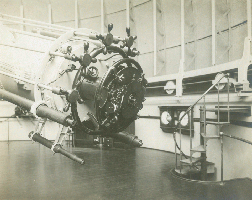
Visual micrometric measures of double stars have formed an intermittent part of the research program carried out with the 26-inch refractor since its construction more than 90 years ago. Seven previous series of measurements have appeared in these Publications. In order to put the present series of visual measures in proper perspective, the aims and results of the earlier series of measures are sketched below.
Asaph Hall is famous for his discovery with the 26-inch refractor of the satellites of Mars in 1877. Less well known are his contributions to double star astronomy in the years 1875-1891. Two lists of observations containing 4,945 measures, were published by Hall (Washington Observations 1877, Appendix 6 & Washington Observations 1888, Appendix 1), who recognized the value of long, continuous series of measures of a limited number of pairs. Hall's contemporaries had a high opinion of the quality of his work and Burnham (A General Catalogue of Double Stars with 120 degrees of the North Pole, Washington, DC, Carnegie Institution of Washington, Part 2, 1906) includes Hall as one of the ``leading observers'' in his double star catalog. That the optical quality of the Clark lens was high, and that the Washington seeing was sometimes quite good, were attested by the numerous measures Hall made of close pairs.
Following the retirement of Hall and the removal of the Naval Observatory to
its present location in 1893, no double star measures were made until 1897, when
See, Skinner, Brown and others began a series of measures extending to 1908
(Pub. USNO, Vol. 6, A 115, 1911). Their measures totalled 1,505, of which 1,288
were made with the 26-inch refractor and the remainder with the 12-inch
refractor. As in Hall's earlier work, close pairs or pairs with large magnitude
difference such as Sirius and Procyon, were observed when seeing permitted.
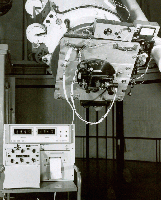
During the gap of more than 20 years from 1908 to 1928, a few measures of the system 70 Ophiuchi were the only measures made (Burton, Hall, Jr., Hammond, & Watts, Pub. USNO, Vol 12, Page 236, 1929). Systematic observations were resumed in 1929, with emphasis at that time placed on relatively wide and faint pairs. In the interval 1929-49 about 1,500 measures of double stars were made, mainly by Burton, Lyons, Raynsford, Wylie, Browne, & Smith (Pub. USNO, Vol. 15, Part 4, 1947) and Lyons & Wylie (Pub. USNO, Vol. 17, Part 2, 1954). Very few of these measures were of pairs with separations of less than 2 seconds.
Markowitz (Pub. USNO, Vol. 17, Part 5, 1954) reintroduced the measurement of close pairs in a series of 1,826 measures made from 1949 to 1952. The median measured separation in his series is only 0.49" and 41 pairs with separations less than 0.2" were measured successfully. The principal innovation Markowitz introduced was a negative lens placed in the field of the micrometer.
I wrote to the head of one of the greatest European observatories, possessing one of the best telescopes of the time, that the first thing I should attempt with the telescope would be the discovery of the companion of Procyon. This first magnitude star, which may be well seen in the winter evenings above Orion, had been found to move in an exceedingly small orbit, one too small to be detected except through the most refinded observations of modern precision. The same thing had been found in the case of Sirius, and had been traced to the action of a minute companion revolving around it, which was discovered by the Clarks a dozen years before. There could be no doubt that the motion of Procyon was due to the same cause, but no one had ever seen the planet thar produced it, though its direction from the star at any time could be estimated.
... on the very first night on which the telescope could be used, I sat
up until midnight to look at Procyon, not doubting that, with the greater
power of our telescope, it would be seen at first glance. To my great
concern, nothing of the sort was visible. But the night was far from good,
the air being somewhat thick with moisture, which gave objects seen through
it a blurred appearance; so I had to await a better night and more favorable
conditions. Better nights came and passed, and still not a trace of the
object could be seen. Supposing that the light of the bright star might be
too dazzling, I cut it off with a piece of green glass in the focus. Still
no companion showed itself...
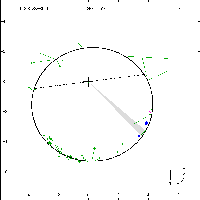
There is a sequel to the history, which may cause its revision by some astronomer not many years hence. When the great telescope was mounted at the Lick Observatory, it is understood that Burnham and Barnard, whose eyes are of the keenest, looked in vain for the companion of Procyon. Yet, in 1895, it was found with the same instrument by Schaeberle, and has since been observed with the great Yerkes telescope, as well as by the observers at Mount Hamilton, so that the reality of the discovery is beyond a doubt. The explanation of the failure of Burnham and Barnard to see it is very simple: the object moves in an eccentric orbit, so that it is nearer the planet at some points of its orbit than at others. It was therefore lost in the bright rays of the bright star during the years 1887-94. Is it possible that it could have been far enough away to be visible in 1873-74? I need scarcely add that this question must be answered in the negative, yet it may be worthy of consideration, when the exact orbit of the body is worked out twenty or thirty years hence.
In the figure at right the observations of Procyon B relative to Procyon are indicated. The dashed line indicates the position angle at the time of the discovery by Schaeberle. The shaded wedge is the predicted position at the time of the observations of Newcomb and Holden. The curve is the orbit of Girard et al. (AJ 119, 2428; 2000).
Charles Worley continued the program of close double stars using the 26-inch and other telescopes and in the process became the 3rd most prolific observer of double stars ever. In the early 1990's he abandoned visual micrometry in favor of speckle interferometry (described below) and ushered in a new era of double star astrometry at the U.S. Naval Observatory.
An explanation of the paper tape output of the Worley filar micrometer is given here.
Historically, spider webs were used for micrometer "wires" given their high tensile strength. Perversely, Black Widow spider webs had the best combination of strength and small diameter. Lick Observatory astronomer Carl A. Wirtanen went so far as keep one in a bottle in his office at Lick which he used to feed a fly every Sunday, though there was also a reservoir of cocoons gathered by Aitken to provide a supply. Unfortunately, most of the pieces of webbing were not long enough.
The bulky Repsold micrometer (pictured above) used seven vertical and six horizontal spider threads.
The Worley micrometer used etched tungsten wires which were 2/10,000th of an
inch thick. A spool of 100 feet of this weighed only eight hundredths of a gram!











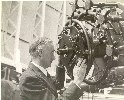








While the 26 inch was used for a great many of these observations, they were also made with the 24 inch reflector, the 12 inch and other small refractors of the Naval Observatory in Washington, the 40 inch and 61 inch reflectors at the USNO Flagstaff Station, the 36 inch refractor of the Lick Observatory, and the 36 inch and 60 inch reflectors of Cerro Tololo Interamerican Observatory.
A brief list of contributions to double star astronomy as well as notes to other contributions is given below:
Delta-m Orbits Discoveries Measures Means Notes
---------------------------------------------------------------------------
G. Anderson 6 1 1 { 1}
W.H. Allen (Lt.) 26 13
A.L. Behall 2 1955 727
E.A. Boeger 173 82
S.J. Brown 424 291
W.M. Browne 61 44
S.W. Burnham 5 22 22
H.E. Burton 1.5 305 135 { 2}
W.W. Dinwiddie 129 84
W.S. Eichelberger 17 6 { 3}
Ibrahim Esmatt of Cairo 1 1
J. Ferguson 46 46 { 4}
M. Fredrickson 38 36
E. Frisby 157 64
J.M. Gilliss (Capt.) 59 391 304 { 5}
A. Hall 5 4872 1584 { 6}
A. Hall, Jr. 58 31 { 7}
J.C. Hammond 1 8 4
E.S. Holden 204 51 19 { 8}
W.J. Hussey 1 1
E.S. King 676 436
G.K. Lawton 10 9
U.S. Lyons 2 440 152
W. Markowitz 2 1819 981 { 9}
H.R. Morgan 5 158 88
S. Newcomb 64 39 {10}
C.H.F. Peters 1 1
G.M. Raynsford 227 158
H.L. Rice 9 9
T.J.J. See 418 262 {11}
A.N. Skinner 14 303 137
L.J. Smith 39 20
R.L. Walker 22 8276 2703
J.C. Watson 1 1
C.B. Watts 1 1 {12}
C.E. Worley 102 2 39 40565 12682 {13}
L.R. Wylie 1.5 468 182 {14}
Burton was a regular correspondent with R.G. Aitken (Lick Observatory, First President of IAU Commission 26) who prepared the USNO double star observing list and much work was spent during Burton's tenure observing the components of 70 Ophiuchi for the determination of the ``personal equation.''
The Burton collaboration did their observations with the Repsold micrometer above. During this period and that of Asaph Hall, Jr. the 26" was primarily used for the observation of minor planets.
During this time due to the lights of Washington (which were predominently in the southeast) the telescope tube was kept on the east side of the pier and observations were made primarily west of the meridian.


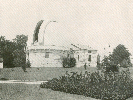



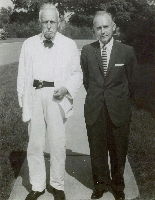
Initiated in 1958 by K. Aa. Strand, the Naval Observatory Photographic Double Star Program accumulated more than 8600 plates before its termination in 1982. These plates were obtained on about 1000 different double star systems with separations between 1.4 and 120 seconds of arc, using the 26-inch refractor in Washington. Another 1900 plates were obtained between 1959 and 1965 with the 24-inch refractor of the Lowell Observatory in Flagstaff, AZ. Of these 10,500 plates, somewhat more than 33% were measured on the Strand Automatic Measuring Machine (SAMM), while the rest were measured manually. The SAMM measurements required that the separation of the double star be greater than about 6 seconds of arc. It should be noted that higher measuring precision is now available in modern measuring instruments, that these would be capable of measuring all separations, and therefore that there is still a large amount of positional information on these plates that has not yet been extracted.
Ejnar Hertzsprung developed the multiple exposure technique for observing
double stars photographically around 1914 at Potsdam. The technique consists in
taking one or more rows of 17 to 35 exposures of a small field which normally
includes only the double star itself. An important feature of the technique is
the use of coarse objective gratings to substantially reduce the problem of
magnitude error by providing two symmetrically placed grating images of the
primary star of approximately the same size as the image of the secondary.
Because there are no reference stars on the plates, the coordinate system is
determined as follows: the position angles are calibrated by exposing on each
plate a star trail to define the equator at the epoch of observation; the
separations are calibrated by determining the scale value of the telescope as a
function of temperature, and this is done by measuring the separations in linear
measure on "scale plates" of widely separated (300" - 1200") pairs of stars of
known angular separation.
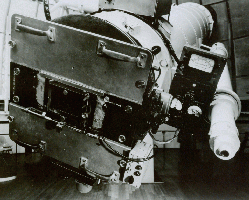
The Hertzsprung multiple exposure technique has been employed at many observatories around the world. There are about 20,000 plate measurements recorded in the literature. Several thousand of these are re-measures of the same plates, so that the actual number of photographic double star plates taken world wide is about 16,000. Since the average number of exposures per plate is about 50, the total number of exposures is about 800,000, and the number of exposure measures is about 1 million. The Naval Observatory program accounted for about 70% of this data.
On the Naval Observatory program, the median mean error of a single exposure for the manual measures was 0.07" (= 3.5 microns), while for the SAMM measures it was 0.05" (= 2.5 microns). The median mean error of a plate mean was 0.011" and 0.009" for the manual and automatic measures, respectively. The corresponding "external" errors, calculated from the interagreement of different plates, were 0.017" and 0.012". All of these error quantities have evolved over the years to somewhat smaller values for the more recent data.
The primary sources of external error in these data are the following:

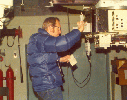


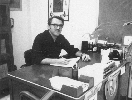




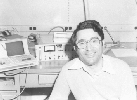




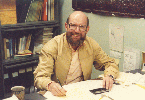

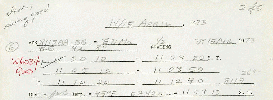
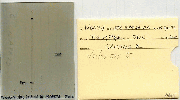
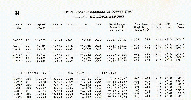
The USNO photographic double star program was quite prolific, and was active from Fall 1958 to Winter 1973. The number of observations listed below reflect numbers for the first author only, although numerous others (some pictured above) were active participants in the program. Some not listed or pictured include: J.L. Gossner and A.L. Behall. A clear aperture was needed from the SAMM machine, and while the USNO 26 inch refractor in Washington was the primary instrument other refractors at the following observatories were utilized: the 18.5 inch Dearborn, the 24 inch Lowell, the 24 inch Sproul and the 40 inch of Yerkes.
A brief list of contributions to double star astronomy as well as notes to other contributions is given below:
Delta-m Orbits Discoveries Measures Means Notes
---------------------------------------------------------------------------
J.W. Christy 1 {1}
C.C. Dahn 71 18 {2}
O.G. Franz 2420 2420 {3}
D.W. Geyer 3 3 {4}
F.J. Josties 5 5224 5224 {5}
V.V. Kallarakal 3391 3391 {6}
I.W. Lindenblad 1 {7}
R.K. Riddle 5 19 19 {8}
Kaj Strand 1046 2 732 354 {9}
It is a credit to Charles Worley that, in the autumn of his scientific career
after making tremendous contributions in micrometery (placing him 4th in terms of
numbers on the list of all contributors) that he switched fields and embraced
speckle interferometry for its abilities to resolve the closest and most
astrophysically interesting pairs: his passion.
Speckle Interferometry is a relatively recent (A. Labeyrie, 1970; A&A, 6, 85)
technique which was most effectively utilized for double star work by Harold
McAlister and colleagues (first at Kitt Peak, later at
CHARA).
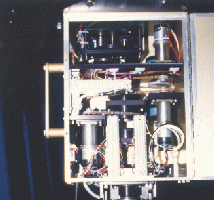
It utilizes the interference of highly magnified light passing through
different sub-apertures of a telescope, and requires exposure times (roughly
10-15 milliseconds) less than the atmospheric coherence time as well as special
optics to correct for various dispersive effects. Typically, these latter
effects are corrected by Risley prisms and narrow interference filters (the most
common ones are about 20-40 nanometers). While resolution improves at shorter
wavelengths the coherence time is also shorter. Given these two considerations
(the desire for the best possible resolution coupled with the need to observe at
times less than the typical coherence time) a wavelength of approximately 550
nanometers seems to perform best.
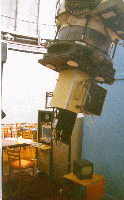
Speckle interferometry is well suited for systems with separations as close as the Rayleigh limit of the telescope and as wide as the isoplanatic patch. For the 26 inch telescope in Washington this means that separations of 0.2 to about 5 arcseconds are acceptable. Systems with small to moderate magnitude difference (usually less than 3) seem to perform best. The technique is relatively insensitive to the site in terms of the magnitude limit (~12) since we are looking at such a small patch of sky, however, it seems to perform best on brighter stars where there are more detected photons (and consequently, correlations). As one speckle observer put it, "the sky is dark just about anywhere at f/200."
The long history of the Naval Observatory's work in double star astronomy,
the suitability of speckle interferometry for an urban setting, and the
applicability of speckle to bright stars (which are the ones most often used for
navigation) makes the long-term future of the program (and the continued use of
the 26 inch Clark refractor) quite bright.
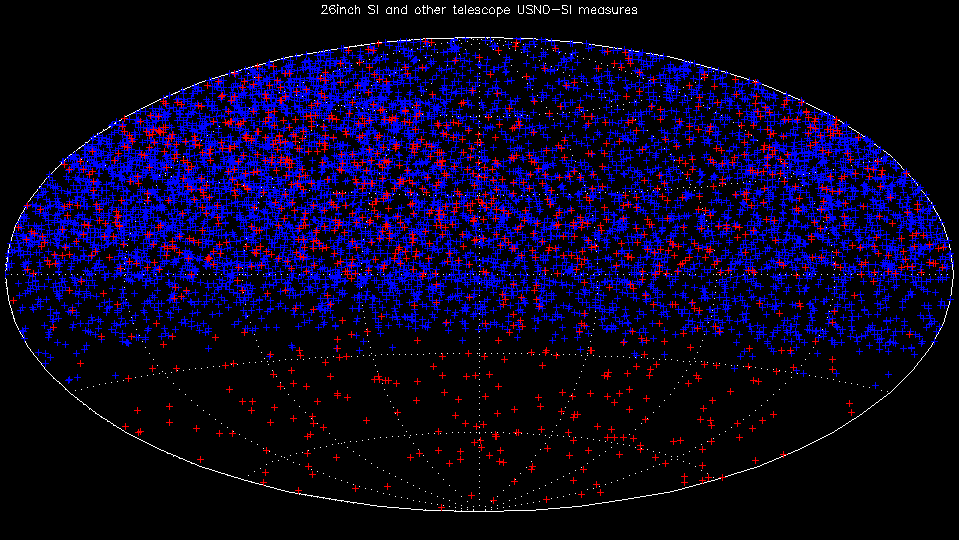
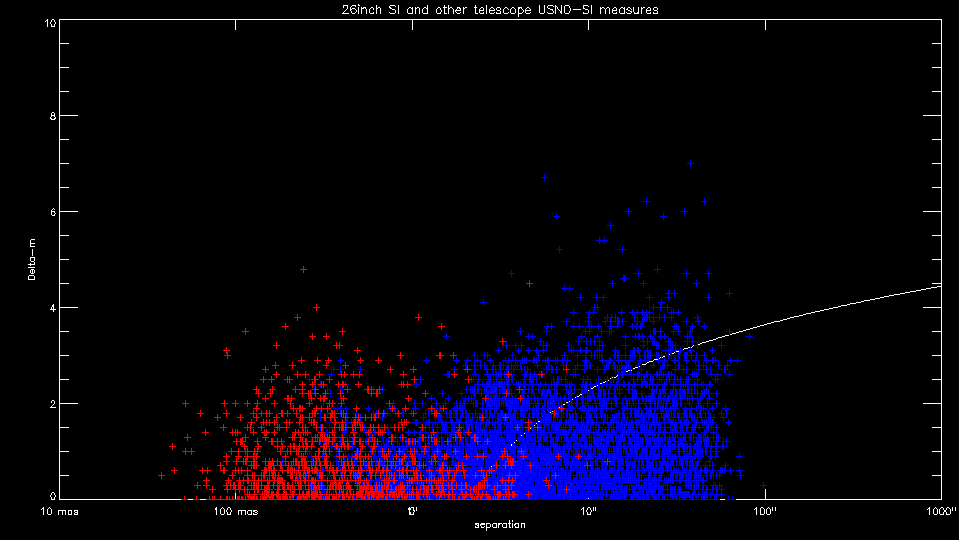
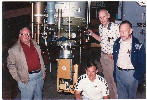



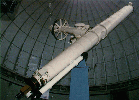
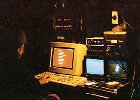
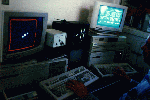
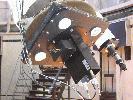
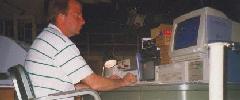


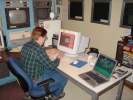

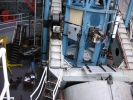
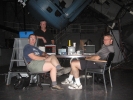

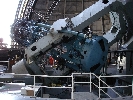



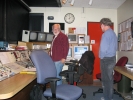
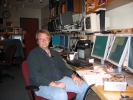
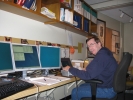


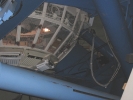

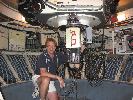

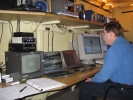



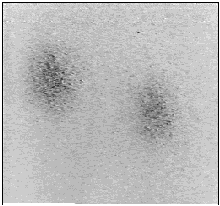
The USNO speckle program remains quite active and is now the second most
prolific speckle program in the world. In addition to the 26 inch in
Washington, the speckle camera has also been utilized on the 2.1-m of McDonald
Observatory and the 4-m telescopes at Kitt Peak National Observatory and Cerro
Tololo Interamerican Observatory.
Statistics as of 1 Jan 2015 Discoveries Mean Observations Notes
---------------------------------------------------------------------------
USNO 26 inch 58 23,941 {1}
USNO 61 inch 1 1,341 {2}
McDonald 82 inch 11 1,406 {3}
Mt Wilson 100 inch 4 1,870 {4}
KPNO/CTIO 4 meter 63 6,241 {5}
A summary of statistical information which breaks down observations into large groups or different techniques is given on the Catalog Statistics page of the Fourth Catalog of Interferometric Measurements of Binary Stars.
The Washington Fundamental Catalog (WFC) Database was produced by Tom Corbin and Sean Urban. It is an internal USNO compilation of 144 astrographic and transit circle catalogs spanning over 100 years. Among other uses, it made the Tycho-2 proper motions possible. An effort was made at the USNO, led by Gary Wycoff, to match all these WFC observations with WDS companions. This has resulted in 36,207 measures and 245 systems resolved for the first time. While not a USNO led observational effort like the other projects included in these figures, these measures would not otherwise be in the double star database. While the separations of these objects is often quite wide, they cover a long timebase, the majority of which come from the Astrographic Catalogue.
Some of these observations were taken in the transit houses of the Naval Observatory, which are in the process of being removed. Images of these buildings, their removal, and a brief history can be found here.
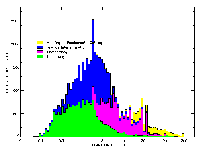
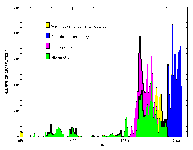
The first half of the 20th century saw relatively little work in double stars. As Raymond Wilson, Jr., who was at the USNO briefly in the 1930s wanted to use the 26 inch for double star observing and was told that he couldn't use it for that purpose as it was not part of the mission.
Later the importance of double stars for high-precision navigation came to the fore. These "Vermin of the Sky" (as dubbed by Charles Worley) were brighter and preferentially selected by star trackers. Deconvolving their profiles at different wavelengths and times became, once more, a high priority mission for the USNO. It has remained as such to this day.
All three main USNO observational programs have made contributions to orbits. Below are four examples. In each of the four cases, two figures are presented. The first illustrates all observations while the second illustrates USNO observations.
In all orbit figures, green plus signs indicate visual (micrometric) observations, violet asterisks photographic measures, and blue symbols various interferometric techniques (open circles, filled circles, and filled squares for eyepiece interferometry, speckle or other single-aperture techniques, and multi-aperture techniques, respectively). Finally, a red "H" or "T" indicates a measure from Hipparcos or Tycho. The dot-dash line indicates the line of nodes. Scales are in arcseconds, and the curved arrow at lower right indicates the direction of orbital motion. In the ``USNO-only'' plots, the grey circle represents the Rayleigh resolution limit of the 26 inch telescope.
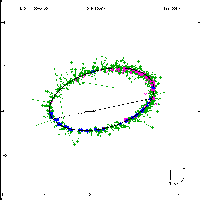
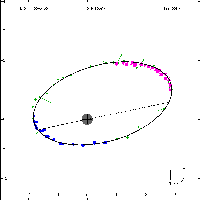
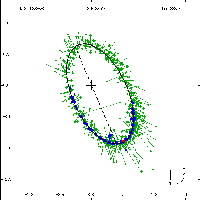
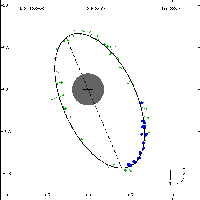
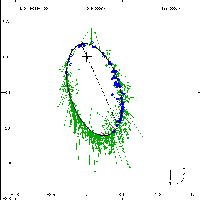
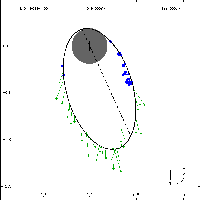
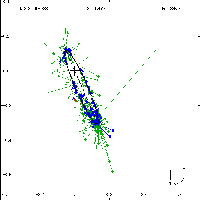
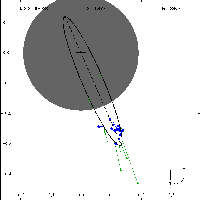
The mission of the U.S. Naval Observatory has always been focused in the observation of known double stars rather than the discovery of new systems. However, there have been a few numerous incidents of binary star discovery that are here highlighted.
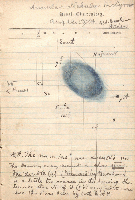
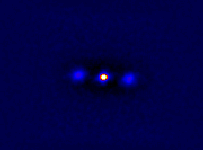
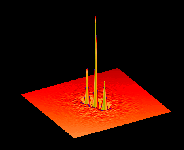
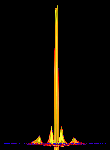
Various doubles added to double star catalogs (BDS, ADS, IDS, and WDS) have carried a WNO (Washington Naval Observatory) code. These eclectic groupings are described below.
New WSI (Washington Speckle Interferometry) doubles have been first resolved on different projects with different telescopes. These are described below.